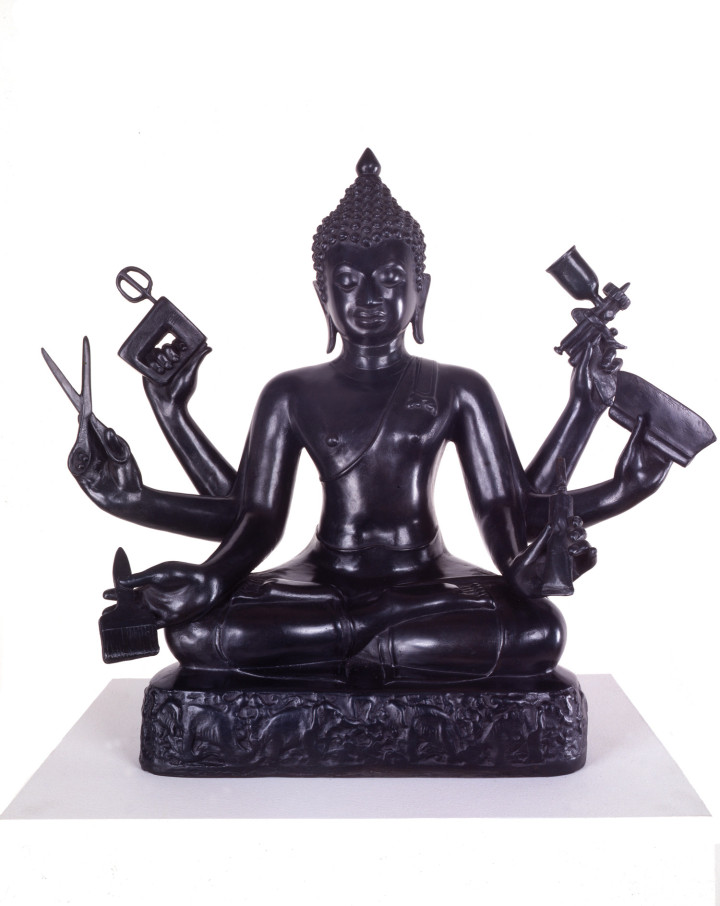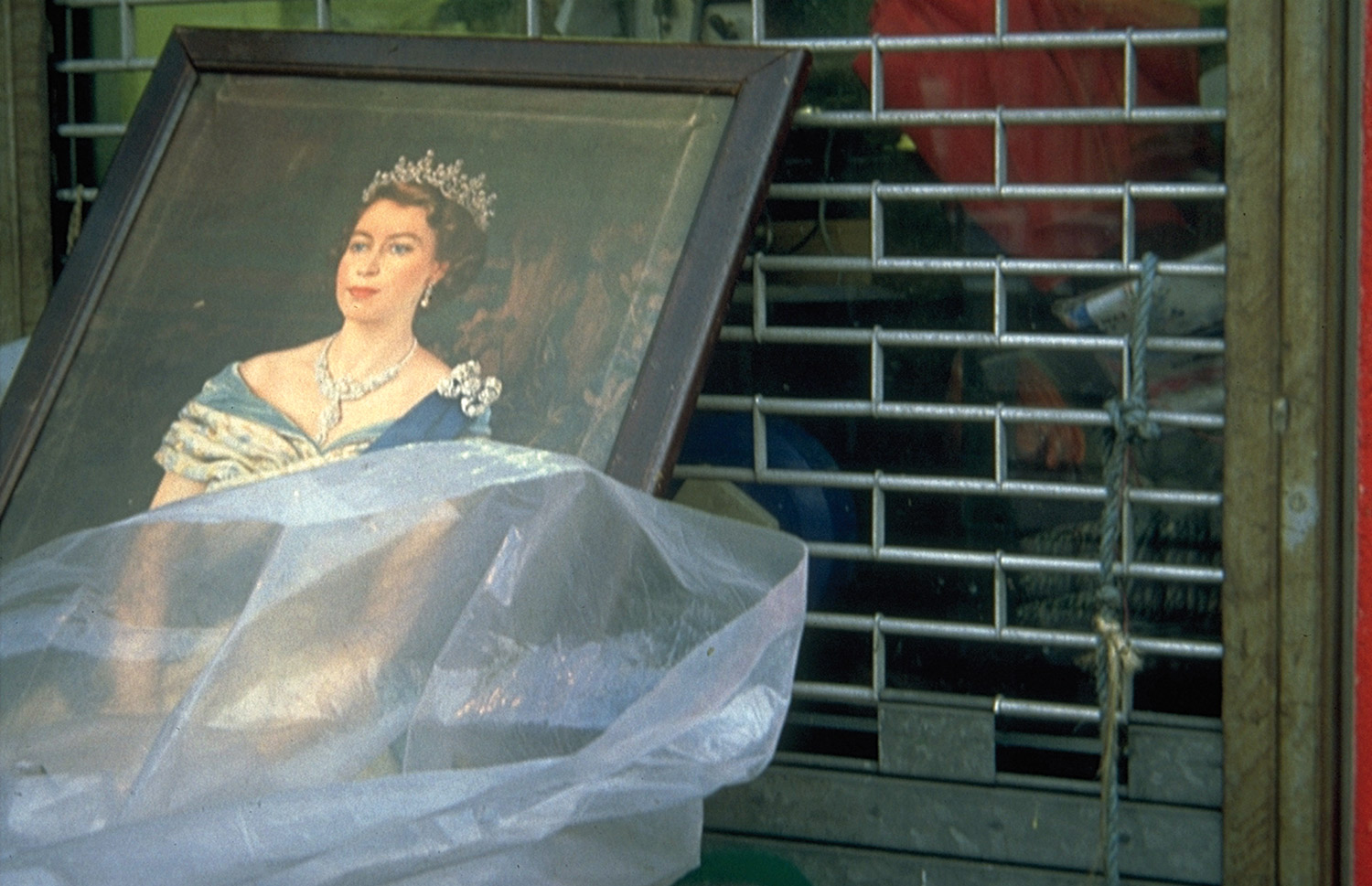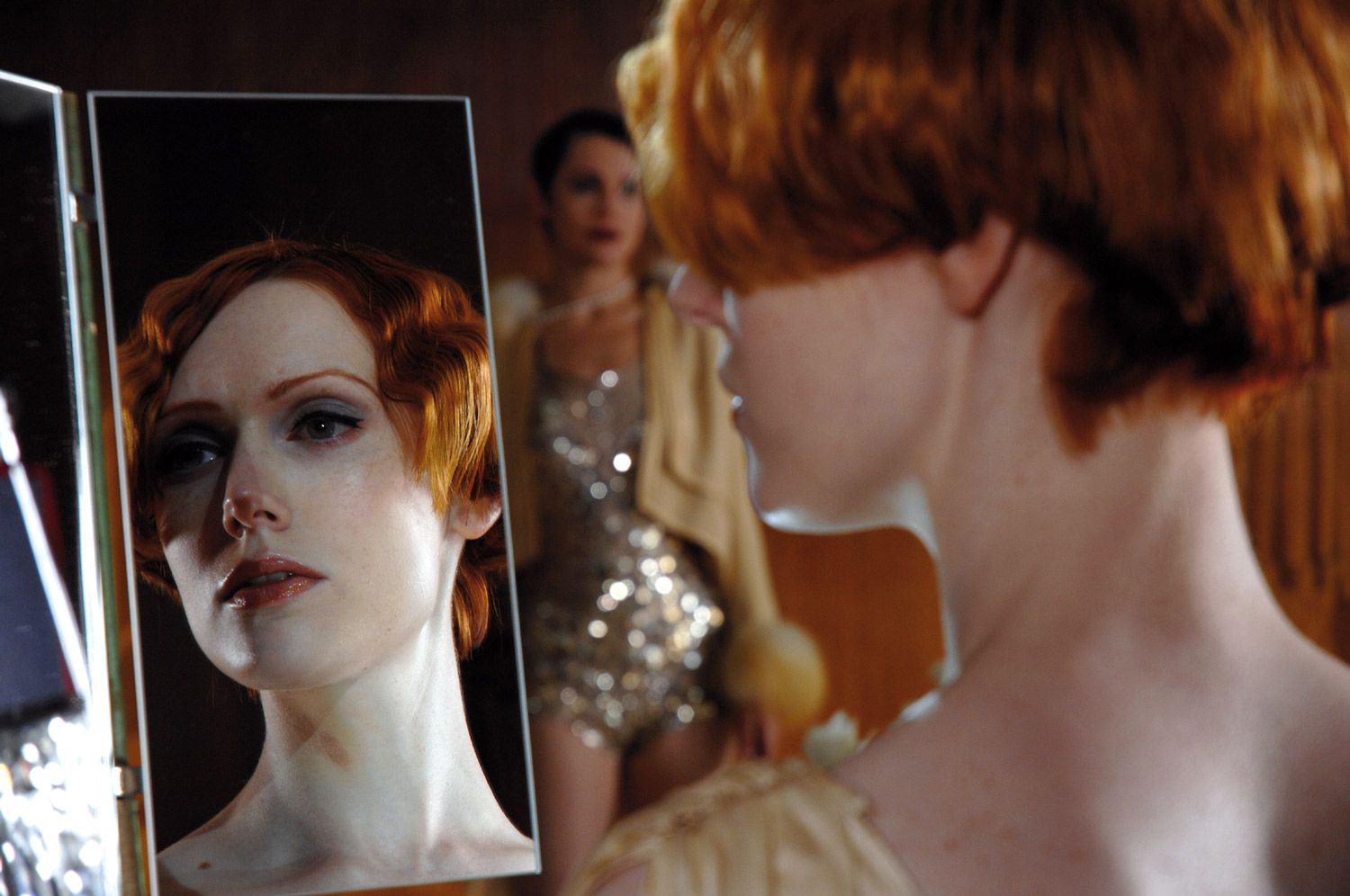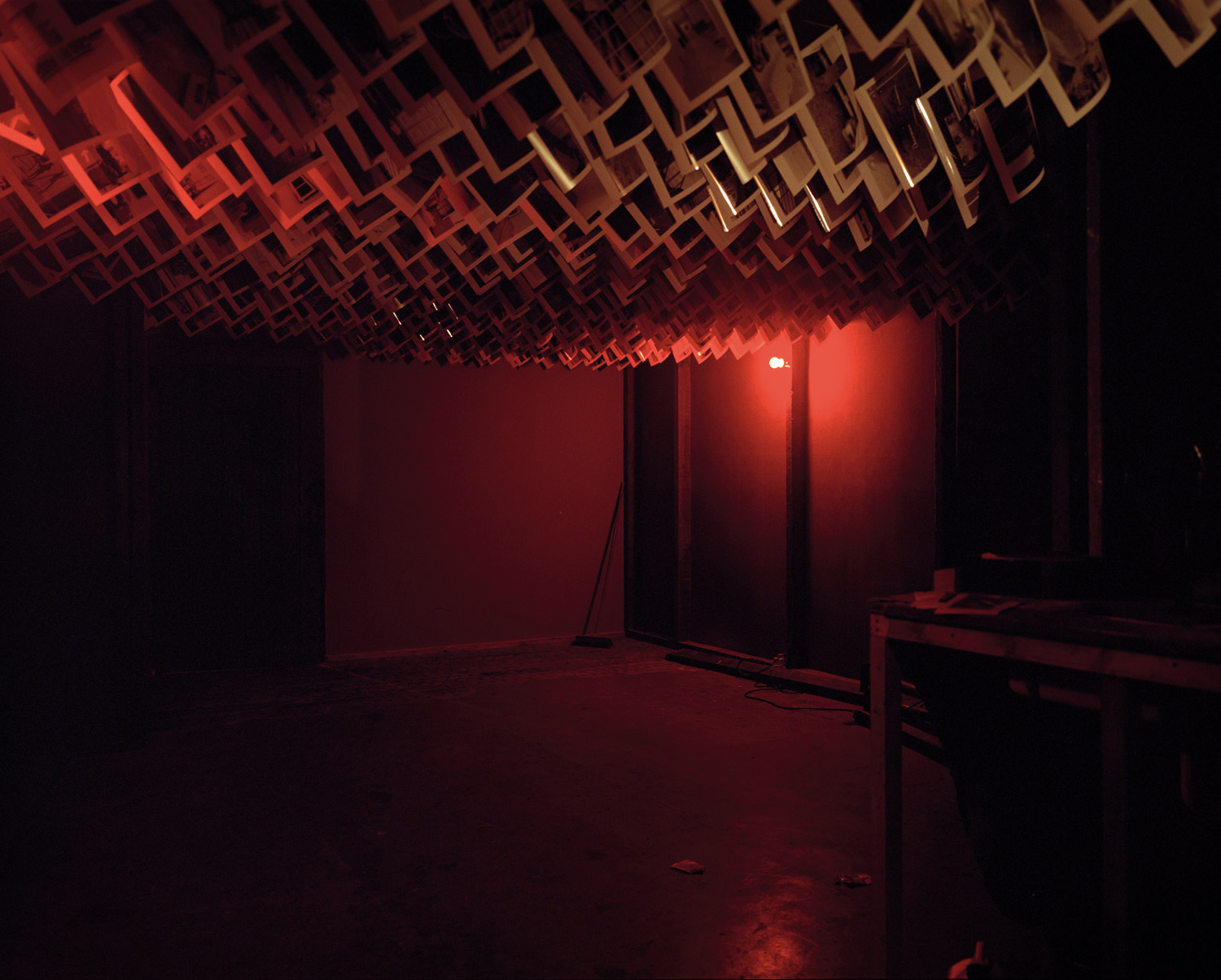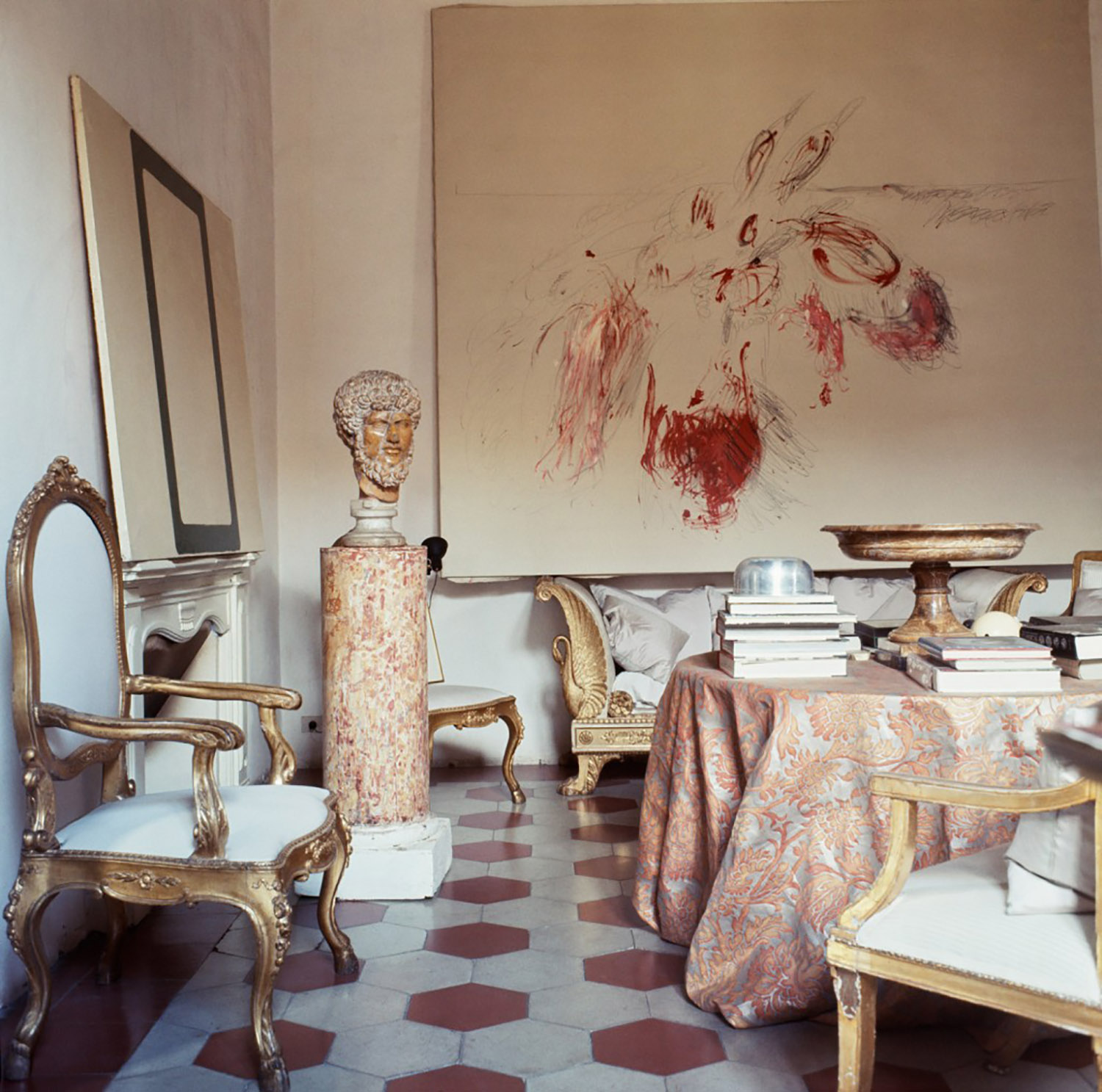
For the 55th Carnegie International, Rudolf Stingel has produced two new large gold-hued paintings with a subtle pattern repeated across the surface of the canvases. Viewers familiar with Stingel’s work may recall this pattern from Stingel’s 2004 work, Plan B, a carpet installed in New York’s Grand Central Terminal and the Walker Art Center in Minneapolis. In Plan B, the floral pattern appeared in pink and blue on a carpet spread out across the floor. This shift from wall to floor and back again is a familiar trajectory for Stingel. He has deployed vast expanses of industrially produced carpeting across either of these architectural elements and has treated both the horizontal and vertical plane as equally suitable sites for painterly action. Untitled (2008) does, however, reveal a notable development in Stingel’s recent work. After exhaustively examining the dynamics of painterly surface for over 20 years, Stingel has recently turned his attention towards the images that his paintings can capture.
Jörg Heiser has described Stingel’s paintings as “permeable membranes” capable of “recording traces of use.” In order to understand Stingel’s turn towards the image, it may be useful to extend Heiser’s observation and consider Stingel’s surfaces as acting as cameras capable of recording any and all images they encounter. In the past, Stingel has used a variety of unorthodox materials, from carpet to Styrofoam to Celotex panels, all chosen for their ability to capture indexical marks made by the artist or the viewer. What is often neglected in discussions of these works is the attentiveness Stingel has paid to the resulting image produced by these seemingly impersonal acts of recording. An Untitled painting from 2000 carved into pink Styrofoam was composed to create a familiar target pattern, but even works created with more arbitrary techniques produce recognizable images. Stingel’s white Styrofoam paintings from 2002 were created by the artist walking across panels placed on the floor, but they depend equally upon the viewer’s recognition of these marks as footprints with corresponding poetic and romantic associations. Stingel’s paintings created by viewers inscribing graffiti-like marks in walls clad in aluminum insulation panels succeed because the viewer associates the work with a mental image of gestural abstract surfaces employed by artists such as Jackson Pollock or Cy Twombly.

Acknowledging the importance of specific imagery in Stingel’s earlier work, it becomes easier to trace the recent incorporation of representational photography into what had been a mostly abstract approach to painting.
Starting with his portrait of gallerist Paula Cooper (Untitled, 2005), Stingel has been embarking on a series of paintings based on photographic portraits, all significantly taken by other photographers. The portrait of Cooper, based on a Robert Mapplethorpe photograph, was hung on one wall of her gallery, paired only with a white vinyl floor that captured dirty footprints from any viewer who entered the space. Both of these surfaces were used to record the presence of a physical body and to serve as a document that those bodies had once inhabited that particular space. The painting of Cooper also drew the viewers to the back of the gallery space, consequently forcing them to mark their passage on the floor’s surface. The entire installation acted as a site for capturing different actions and extending them out into space.
Stingel’s next engagement with photography arrived as a series of black-and-white self-portraits painted in 2006 [“Untitled (After Sam),” 2005-06]. These works, some monumental and others small and intimate, were all painted after photographs taken by the artist Sam Samore. Stingel and his assistants enlarged Samore’s dramatic images into paintings using a painstaking but ultimately mechanical process. These paintings may evoke a number of art-historical references for the viewer in their composition and monumental scale, but the process allows Stingel to keep any self-expressive content out of the finished paintings. In this way, even as the image of the artist moves from photograph to painting, it maintains the impersonal quality that the camera can provide. Most importantly, Stingel does not produce the image that appears on the canvas, leaving the act of representation to the photographers themselves. It is more accurate to describe the labor of these paintings as a sequence of framing, selection and translation.
This framing can be seen in white Styrofoam footprint paintings, whose arrangements of two or four panels of Styrofoam were taken from a much larger field of panels that covered the entire floor of Stingel’s studio. It was also deployed in a barely-noticed pair of works in his survey exhibition at the MCA Chicago. Stingel produced two black-lacquer doorways at either end of a single small gallery within the installation. Acting as a subtle but distinct threshold between spaces, the doorways forced the viewer to treat everything that they observed through them, whether it be other artworks or other visitors, as a picture. More recently this approach has led to a series of gold, silver and black paintings based on particular patterns of historical wallpaper. In these works, Stingel treats each pattern as an image capable of evoking specific historical and architectural spaces and styles. By using these patterns as paintings, however, he is not simply attempting to recreate their luxurious (or kitschy) effects, but also expects them to function in relationship to the surrounding space. He attends to the wall, floors and ceilings of the exhibition space precisely because the viewer can never permanently shut out these distractions. These wallpaper paintings act as fragments of historical surfaces, partial memories in the mind of the viewer that trigger arresting moments in the continuity of the visual field. The surfaces of these paintings also distort their relationship to the surrounding architecture. After applying the pattern to the surface of the canvas in a single color, subtle highlights are hand-painted over the top, creating illusions of light and shadow. The paintings are then no longer extensions or accumulations on the wall; rather they are artificial slivers of time existing somewhere outside of the viewers’ own.

As Stingel weds his recent photography-based works with his ongoing concern with painting’s relationship to three-dimensional space, his images start to take on a more active presence and slowly broach a connection to cinema. This burgeoning relationship was hinted at in his installation of carefully choreographed self-portraits. An exhibition of the small-scale self-portraits in Edinburgh’s Inverleith House [“Louvre (After Sam),” 2006] allowed the viewer to start to make temporal connections between the separate canvases. While not necessarily sequential, the paintings act almost as jump cuts moving across different moments in the same event. The viewer can not help but try and use these images to re-construct the scene depicted. The large-scale self-portraits displayed push this relationship even further, taking Samore’s already cinematic photographs and giving them the monumental presence of the movie screen. These images are pictures just starting to come to life. Even when dramatic in scale, the mundane nature of Stingel’s appearance and gestures suggests the gentle flicker of home movies or even the casual, accidental magic of early cinema. It is clear that the incorporation of photography into his practice has allowed Stingel to extend the experience of individual canvases even further than before.
Returning to Stingel’s newest work, Untitled (2008) perhaps best captures his preoccupation with the movement of images across surfaces and across time. Like the preceding wallpaper paintings, Untitled (2008) depends on the relationships between flat pattern and an illusion of volume and light that border on the photographic. The floral pattern of the Plan B carpet entered the stream of images that Stingel has produced and calls upon to manipulate, re-frame, fragment and project in any number of ways. In doing so, Stingel remains constantly attentive to how the viewer looks at any picture and how their experience can shift and transform over time. Vanderbilt Hall in Grand Central Terminal and the entryway to the Walker both began as physical spaces that existed as images in the minds of thousands of visitors. Stingel’s feat was to transform these images by applying this found pattern to trace over a single architectural plane. The result is a new picture in the viewers mind, one intimately tied to the appealingly soft surface of the carpet itself. This image then fractures again when it reaches the sumptuous surfaces of the gold paintings, thus losing its color scheme and moving from floor to wall. Stingel’s paintings depend upon a viewer moving through three-dimensional space, engaged in an active visual perception that is constantly translated into memory. It is this process that Stingel relies upon to turn action into image and image into painting.

